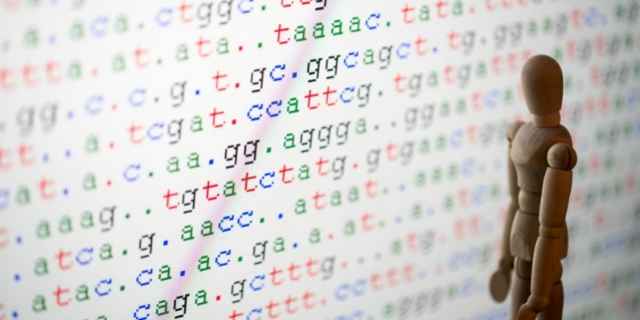Genotyping is a way of analyzing DNA to explain how someone’s genetic makeup influences their traits and characteristics.
Let’s say Bill is a tall guy and has black hair. Bob is six inches shorter than Bill and has red hair.
Before we get into how genotyping comes into play, we need to start with an easier concept: phenotypes.
What Are Phenotypes?
Traits like hair color or height or skin tone are known as phenotypes. We can see these physical characteristics.
Traits and phenotypes are almost the same concept, but a phenotype can be a collection of traits.

What Determines Your Phenotypes?
DNA isn’t the only thing that determines height or hair color.
Nutrition plays a major role in how tall we grow. So, the environment is one factor that determines a phenotype.
Bill and Bob could have what looks like the same set of genes, but some are turned on or off. Bob could have the gene for red hair and brown hair, but the latter gene is turned off.
Harvard scientists found that hundreds of genetic “switches” influence height.
This second factor is called epigenetics.
The other reason that Bill and Bob have different heights and hair colors is that there are differences in their genes.
Three factors
This third factor, a sequence of genes, is known as genotype. In summary, our traits or phenotypes are determined by three factors:
- genotype
- environment
- epigenetics
Let’s put environment and epigenetics to one side and crack on with genotypes.
What Is A Genotype?

A genotype is the sequence of genes that partly determines a trait or phenotype.
Traits and phenotypes are almost the same concepts, but a phenotype can be a collection of traits.
It’s important to remember that 99.9% of human DNA is identical.
If we compare the same area of DNA between Bill and Bob, most of it will be made up of the same four base units. You may be familiar with how we name these units as A, G, C, and T.
But in specific areas of our DNA, there are some small pieces that vary from one human to another.
This is how Bill is tall and has black hair, while Bob is short and red-haired.
What Is Genotyping And Why Do We Need It?
First, I’ll tell you what genotyping is not.
Suppose we compare all of Bob’s DNA against all of Bill’s.
Full DNA sequencing
That means analysing the entire genome (the complete set of genes).
There are over three billion base units (A, G, C, or T) in the human genome. So, how long would it take to run this comparison?
Well, the Human Genome Project took over ten years to analyse 92% of the genome. This was at a cost of about $3 billion (yes, that’s about $1 per unit!)
The other 8% was completed eight years later.
Bill and Bob could be waiting! Admittedly, techniques have greatly speeded up since then.
Analyzing the full genome is also much cheaper. You can now order a “whole genome sequencing” test for under $1,000.
But why would you want to – when 99.9% of DNA is identical across humans?
Wouldn’t it be cheaper and faster to target the 0.1% of DNA that varies? That’s what genotyping is for.
Simple definition of genotyping

Genotyping is a technique that analyses the genetic sequence of specific positions in the genome that are known to vary.
This means that researchers or companies decide in advance what positions they are targeting.
If you’ve taken an Ancestry DNA test, about 730 thousand positions are targeted currently.
If you’ve taken a 23andMe test, about 690 thousand positions are targeted currently.
This is a tiny percentage of the whole genome.
Interestingly, as the companies have honed their tests, they’ve reduced the number of positions. This makes for greater efficiency and a cheaper test.
What Is The Difference Between Genotyping And Sequencing?
DNA sequencing analyses the sequence of all base units in a piece of DNA. Genotyping only analyses specific positions in DNA that are known to vary.
Whether we are genotyping parts of the genome or sequencing the full genome, we are still talking about identifying the base unit and how they are ordered.
What does that exactly mean? How does sequencing work?
There have been several big developments in techniques that started in the 1970s.
Check out our separate article that explains DNA sequencing in simple terms.